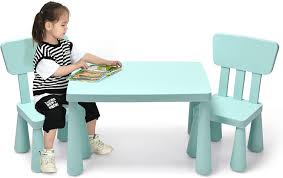Introduction
In this comprehensive article, we delve into the significance of ISO/CD 9221 safety requirements for high chairs. High chairs are a common feature in households with infants and toddlers, providing a safe and convenient space for them during mealtimes. However, safety concerns have prompted the development of international standards like ISO/CD 9221, which aim to ensure the utmost safety and reduce potential risks associated with high chairs. We will explore the key aspects of these safety requirements and how they contribute to enhancing the safety standards of high chairs.
Understanding ISO/CD 9221
ISO/CD 9221 is a crucial international standard that addresses safety requirements for high chairs designed for children. Developed by the International Organization for Standardization (ISO), this document focuses on mitigating potential hazards that may arise from the use of high chairs and aims to provide guidelines for manufacturers, retailers, and consumers. The standard covers various aspects of high chair design, construction, and performance, with the primary objective of reducing the risk of accidents and injuries.
Key Safety Requirements
1. Stability and Structural Integrity
One of the fundamental safety requirements of ISO/CD 9221 pertains to the stability and structural integrity of high chairs. The standard specifies that high chairs should be stable and secure during regular use, reducing the risk of tipping over. It also outlines the materials and testing methods to ensure the strength and durability of the high chair’s construction.
2. Restraint Systems
ISO/CD 9221 emphasizes the importance of proper restraint systems in high chairs to prevent children from falling or slipping out of the chair. The standard lays down guidelines for harnesses and safety belts, ensuring that they are designed to securely hold the child in place without causing discomfort.
3. Height Adjustability
High chairs often come with adjustable features to accommodate growing children. ISO/CD 9221 provides guidelines for height adjustability mechanisms, ensuring that they function smoothly and securely. Proper height adjustment is essential to maintain the child’s comfort and safety during use.
4. Locking Mechanisms
To prevent accidental folding or collapsing of high chairs, the standard mandates effective locking mechanisms. These mechanisms must be easy to use for adults but secure enough to prevent unintended folding, thus minimizing the risk of injuries to both children and caregivers.
5. Tray Design
High chair trays play a significant role in mealtime safety. ISO/CD 9221 outlines requirements for tray design, including size, depth, and materials. Additionally, the standard addresses the ease of attaching and detaching the tray to ensure convenience for caregivers while maintaining a secure fit during use.
6. Sharp Edges and Protrusions
To avoid potential injuries, ISO/CD 9221 sets limits on sharp edges and protrusions in high chair design. This requirement ensures that the high chair’s structure and components do not pose any hazard to the child, minimizing the risk of cuts or bruises.
7. Product Information and Warnings
Manufacturers are required to provide clear and comprehensive product information and warnings to consumers. ISO/CD 9221 specifies the content and placement of safety labels, instructional materials, and warnings to raise awareness about potential risks and proper usage of the high chair.
The Impact of ISO/CD 9221 on High Chair Safety
The implementation of ISO/CD 9221 safety requirements has had a profound impact on high chair safety worldwide. By adhering to these guidelines, manufacturers can ensure that their products meet the highest safety standards. Consumers, in turn, can make more informed decisions when purchasing high chairs, knowing that the products comply with rigorous safety requirements.
This standard has also significantly contributed to reducing the number of high chair-related accidents and injuries. With stability, proper restraint systems, and secure locking mechanisms, the risk of falls, tipping, and entrapment is significantly diminished. Moreover, the elimination of sharp edges and protrusions enhances the overall safety and comfort of high chairs.
Choosing Safe High Chairs
As a responsible consumer, it is essential to consider safety as a top priority when choosing a high chair for your child. Always look for products that comply with ISO/CD 9221 safety requirements. These chairs will typically bear a mark or label indicating their compliance with the standard.
Additionally, read product reviews and seek recommendations from other parents who have used the same high chair model. First-hand experiences can offer valuable insights into the practicality and safety of the product.
Conclusion
ISO/CD 9221 safety requirements for high chairs have revolutionized the safety standards of these essential child-care products. By addressing stability, restraint systems, height adjustability, tray design, and other critical aspects, this international standard has significantly reduced the risk of accidents and injuries. Choosing high chairs that meet these safety requirements ensures a safer mealtime experience for children and peace of mind for parents and caregivers.








